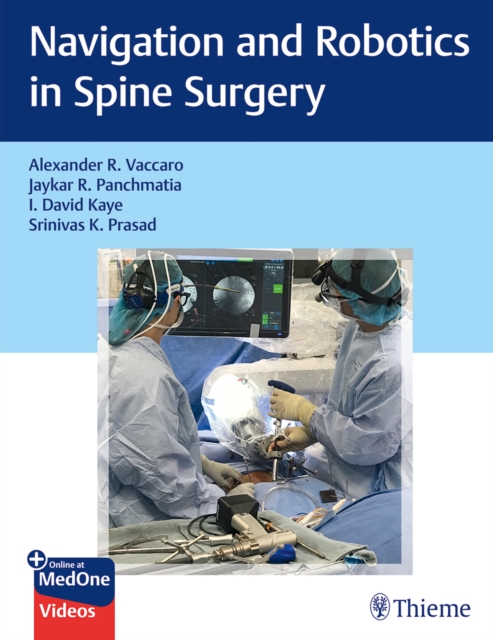
Navigation and Robotics in Spine Surgery Multiple-component retail product, part(s) enclose
by Alexander R. Vaccaro, Jaykar Panchmatia, David Kaye, Srinivas K. Prasad
Multiple-component retail product, part(s) enclose
Description
A unique how-to guide for spine surgeons on state-of-the-art computer-assisted navigation and robotic surgery techniquesThe past decade has seen major advances in image-guided spine surgery techniques, with robotically assisted approaches emerging in the last five years.
While early adopters of this technology paved the way for more widespread use of navigated and robotic systems, barriers still exist.
Navigation and Robotics in Spine Surgery by master spine surgeon Alexander Vaccaro and esteemed co-editors Jaykar Panchmatia, I.
David Kaye, and Srinivas Prasad addresses existing issues such as the perception of increased upfront costs, intrusion on current workflow, and a lack of understanding about the potential ways these technologies can enhance the surgical experience and improve patient outcomes. Organized into six sections, the book starts with evidence-based fundamentals of navigated spine surgery and robotics including discussion of instrumentation and mechanics.
Sections 2-5 serve as a surgical handbook for spine surgeons who wish to introduce these technologies into practice or augment their current repertoire with more complex techniques.
Topics range from more routine procedures such as navigated and robotic minimally invasive TLIF to complex approaches like intraoperative ultrasound guided intradural spinal tumor resection.
The final section looks at future directions and potential new applications for these technologies. Key HighlightsAn impressive group of international spine surgeons who pioneered navigation and robotic surgery techniques share invaluable tricks of the tradeDiscussion of fluoroscopy- and intraoperative CT-based platforms, applications for intraoperative sonography, and radiation exposure and minimization strategiesSpecial topics include OR set-up and workflow, surmounting the learning curve, artificial intelligence, and lessons learned from other industriesProcedural videos demonstrate the benefits of computer-assisted navigation and robotic techniquesThis book is essential reading for orthopaedic surgery and neurosurgery residents and spine fellows who wish to learn about and incorporate these technologies into practice.
Seasoned spine surgeons seeking to expand the scope of their navigated/robotic practice will benefit from chapters detailing advanced approaches. This book includes complimentary access to a digital copy on https://medone.thieme.com.
Information
-
Available to Order - This title is available to order, with delivery expected within 2 weeks
- Format:Multiple-component retail product, part(s) enclose
- Pages:230 pages, 125 Illustrations, unspecified
- Publisher:Thieme Medical Publishers Inc
- Publication Date:08/01/2020
- Category:
- ISBN:9781684200313
Other Formats
- EPUB from £112.49
Information
-
Available to Order - This title is available to order, with delivery expected within 2 weeks
- Format:Multiple-component retail product, part(s) enclose
- Pages:230 pages, 125 Illustrations, unspecified
- Publisher:Thieme Medical Publishers Inc
- Publication Date:08/01/2020
- Category:
- ISBN:9781684200313






